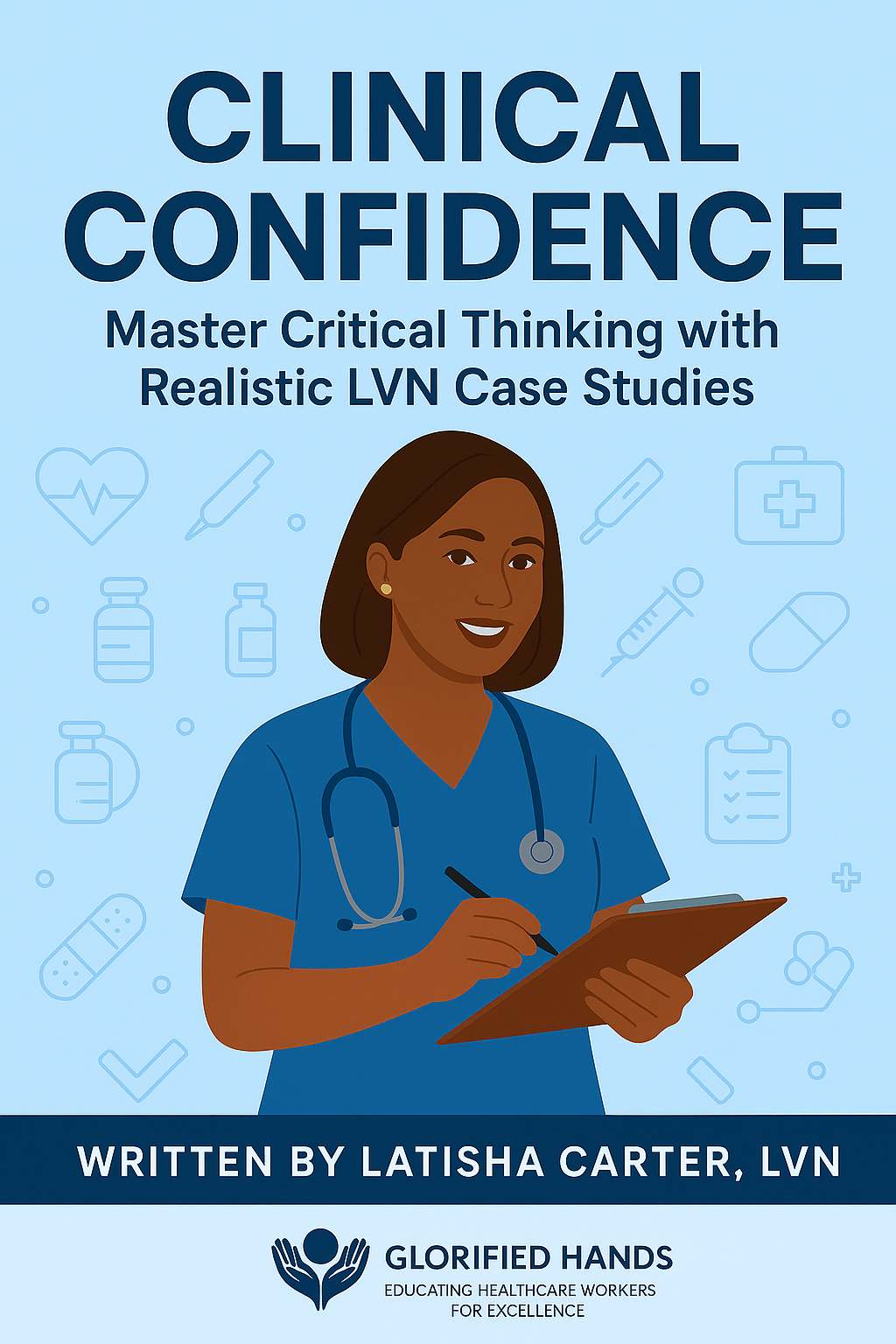$15.00
Step into the world of nursing with confidence, clarity, and competence. Clinical Confidence is more than just a book, it's your hands on guide to mastering the decision making skills every Licensed Vocational Nurse (LVN) needs to succeed.
Inside, you'll find:
✅ 20+ detailed, real-world case studies designed to strengthen your clinical judgment.
✅ Step-by-step guidance on applying the nursing process in practical scenarios.
✅ Cultural considerations to prepare you for caring for diverse patient populations.
✅ Practice questions and reflection prompts to sharpen your problem-solving abilities.
✅ An answer key so you can check your understanding and build confidence.
Whether you're a nursing student, a new LVN, or a practicing nurse looking to refresh your skills, this book equips you with the tools to think critically, act decisively, and provide safe, compassionate care.
Perfect for classroom learning, self-study, or professional development, this ebook bridges the gap between theory and practice, turning knowledge into confidence.
DETAILS
Workbook Example
Chapter 2
Nursing Process Refresher
The nursing process is the foundation of all nursing care. It provides a systematic, evidence based method for identifying patient needs, planning care, carrying out interventions, and evaluating outcomes.
As an LVN, you contribute to every step of the process, even though you may not make nursing diagnoses independently.
The 5 Steps of the Nursing Process
Step
Assessment
Diagnosis
Planning
What It Involves
Collecting data: vitals, history,
physical observations
RN identifies nursing diagnoses
Setting goals and priorities
Implementation Carrying out interventions
Evaluation
Determining if goals are met
LVN Role
Measure vitals, focused assessments,
report changes
Provide supporting data
Offer realistic interventions
Administer meds, provide care,
reinforce teaching
Observe outcomes, document progress
Importance for LVNs
• Consistency: Following the process ensures no step is skipped.
• Teamwork: Helps you communicate effectively with RNs, who rely on your accurate
data.
• Patient Safety: Early recognition of changes allows timely interventions.
• Legal Protection: Demonstrates that you are following standards of nursing practice.
Planning & Prioritization in Action
When planning care, think about what needs to be done first and what can wait. Use tools like:
• Maslow’s Hierarchy of Needs (Physiological → Safety → Love/Belonging → Esteem → Self-Actualization)
• ABCs (Airway, Breathing, Circulation)
Visual Aid – Nursing Process Cycle
[Assessment] → [Diagnosis] → [Planning] → [Implementation] → [Evaluation] → (Back to Assessment if needed)
This continuous loop reminds you that nursing care is ongoing and dynamic.
Tip: Always prioritize ABCs (Airway, Breathing, Circulation) and Maslow’s Hierarchy of Needs.

